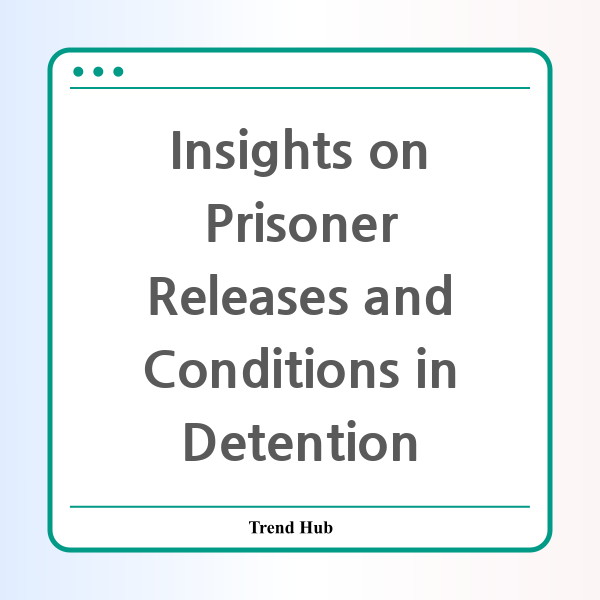* This website participates in the Amazon Affiliate Program and earns from qualifying purchases.

As recent events unfold in the Israeli-Palestinian conflict, the dynamics surrounding prisoner releases have become a focal point of discussion. How do these releases impact the lives of both the freed individuals and their communities? In this blog post, we delve into the stories of released prisoners and the conditions they endured while in captivity.
Recently, a significant number of Palestinian prisoners were welcomed back to their communities in Ramallah, following a ceasefire deal between Israel and Hamas. The atmosphere was charged with emotion as thousands gathered to support those who had endured the harsh realities of detention centers in Israeli territory. These released individuals shared harrowing accounts of their experiences, shedding light on the grim conditions they faced:
- Limited access to medical care
- Overcrowded and unsanitary living conditions
- Emotional and psychological stress from confinement
In a parallel narrative, the tales from Israeli soldiers released from Hamas captivity illustrate a different but equally troubling side of the captivity experience. Reports from these soldiers, who were abducted during a surprise attack, reveal a complex mixture of fear, deprivation, and unexpected acts of care among their captors. The soldiers recounted their experiences after returning home:
- They were frequently moved to different locations, often hiding in plain sight as disguised civilians.
- While initially cared for by a fellow hostage, they later learned of the tragic fate of this individual.
- The harsh realities of their confinement included emotional restrictions, such as being forbidden to show affection toward one another.
- Limited provisions were a constant struggle, with reports of extreme hunger and substandard living conditions.
- Despite the fear and psychological toll, many expressed a resilience that shone through the ordeal.
Through the experiences of both Palestinian and Israeli prisoners, we gain insight into the broader implications of such conflicts. The treatment of prisoners often reflects the prevailing tensions between groups, highlighting the urgent need for dialogue and resolution. In light of the humanitarian crisis, advocates call for:
- Improved conditions for all individuals in detention
- Increased transparency regarding the treatment of prisoners
- Reinforced efforts towards peaceful resolutions to prevent similar conflicts in the future
In conclusion, the stories of released prisoners from both sides of the conflict illustrate the deeply rooted issues that influence their lives and communities. As the world watches these events unfold, it becomes clear that the path toward reconciliation necessitates a commitment to understanding and addressing the underlying humanitarian concerns. While the cessation of hostilities may provide a temporary reprieve, lasting peace will require a concerted effort from all parties involved.
* This website participates in the Amazon Affiliate Program and earns from qualifying purchases.